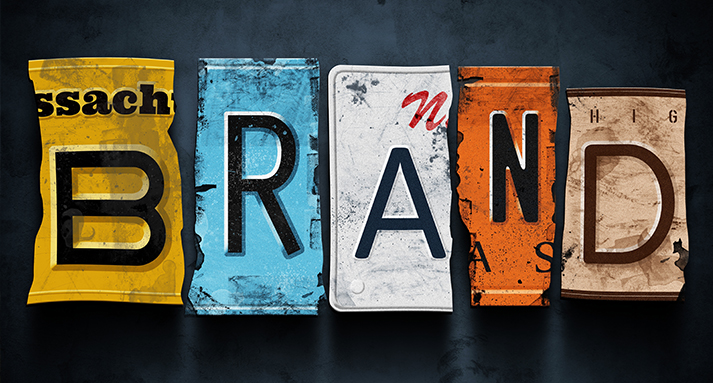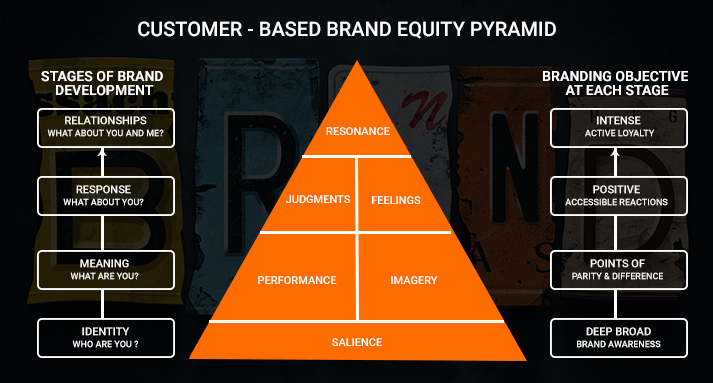Creativity: The Key to Brand Resonance

Brand Resonance refers to the relationship that a consumer has with the product and how well the consumer relates with said product. Resonance is the intensity of customer's psychological connection with the brand and the randomness to recall the brand in different consumption situations.
Brand resonance begins with...
Brand Identity
The first and foremost step, is to ensure the brand identification with the customers, i.e. creates awareness about the product and establish an association in the minds of customers with respect to its usage and the segment for which it exists.
Brand Establishment
To create a full meaning of the product in the minds of customers, so that they start remembering it.
Eliciting Response
Once the association is built with the customers, the next step is to elicit the responses, i.e. what customers feel about the brand?
Relationship
The next and final step is to convert the responses into building the customer’s strong relationship with the brand.
In order to accomplish these four pre-requisites for creating the brand equity, the Six brand building blocks need to be followed that are arranged in a pyramid-like structure called as Brand Resonance Pyramid.

1. Brand Salience
Brand salience means, how well the customer is informed about the product and how often it is evoked under the purchase situations? The marketer should not only focus on just creating the awareness about the product but also includes the ease with which the customers can remember the brand and the ability to recall it under the different purchase situations.
2. Brand Performance
Brand performance means, how well the functional needs of customers are met? At this level of the pyramid, the marketers check the way in which product is performing and how efficiently it is fulfilling the needs of the customers.
3. Brand Imagery
Brand Imagery means, what product image the customer create in their minds? This aspect deals with the customer’s psychology or the feelings that how they relate to the product in terms of their social needs.
4. Brand Judgements
Brand Judgement means, What customer decides with respect to the product? The customers make the judgment about the product by consolidating his several performances and the imagery associations with the brand. On the basis of these, the final judgment is made about the product in terms of its Perceived Quality, Credibility, Consideration, and Superiority.
Drawing on deep customer insights, ideation and creative brainstorming can solve big problems.
5. Brand Feelings
Brand feelings are what customers feel, for the product or how the customer is emotionally attached to the product? The consumer can develop emotions towards the brand in terms of fun, security, self-respect, social approval, etc.
6. Brand Resonance
Brand Resonance is the psychological bond, the customer has created with the brand? This is the ultimate level of the pyramid, where every company tries to reach. Here the focus is on building the strong relationship with the customer thereby ensuring the repeated purchases and creating the brand loyalty. The resonance is the intensity of customer’s psychological connection with the brand and the randomness to recall the brand in different consumption situations.
For further information we recommend reading the full article: Simplynotes.in, mbabba (2016, April 12). "What is Brand Resonance?" Retrieved from Business Jargons: https://businessjargons.com/brand-resonance.html
Creative Problem Solving
The mostly highly admired brands are usually unique, original, fresh, and leading edge. To be that kind of a brand, an organization must be highly innovative. Innovative brands with innovative products, services, and marketing approaches typically make extensive use of creative problem solving and ideation (idea generation) techniques. The purpose of ideation is to generate as many ideas as possible in as condensed a timeframe as possible. Brainstorming is the most popular ideation technique.
Brainstorming requires the following components to be successful:
• Visualization, guided imagery, fantasizing and envisioning the future
• Attribute listing, discovering connections between those attributes
• Mind mapping, diagramming relationships • Question the problem and its assumptions, broaden the problem, look at the problem at a meta- level • Applying ideas from one context to another (metaphorical thinking)
• Creating connections for two previously unconnected items (bisociation)
• Free associations (What is the first word that comes to your mind when I say…?)
• Forced relationships (Or, forcing an association between the problem or solution and random words)
• Conceiving of two unrelated entities occupying the same space (homospatial thinking)
• Stopping to further consider associations that initially make us laugh (laughter results from the unexpected connection between two things)
• Sketching and doodling
• Stream of consciousness writing
• Experience the problem emotionally, intellectually, spiritually and physically
• Incubation (walking away from the problem after intensely thinking about it)
• Live a life of diverse experience
For further information we recommend reading the full article:"Exploring Ideation and Creative Problem Solving", by Brad VanAuken - The Blake Project (2006, October 24). Retrieved from brandingstrategyinsider.com: https://www.brandingstrategyinsider.com/exploring_ideat/#.XjMmUWhKhhE


